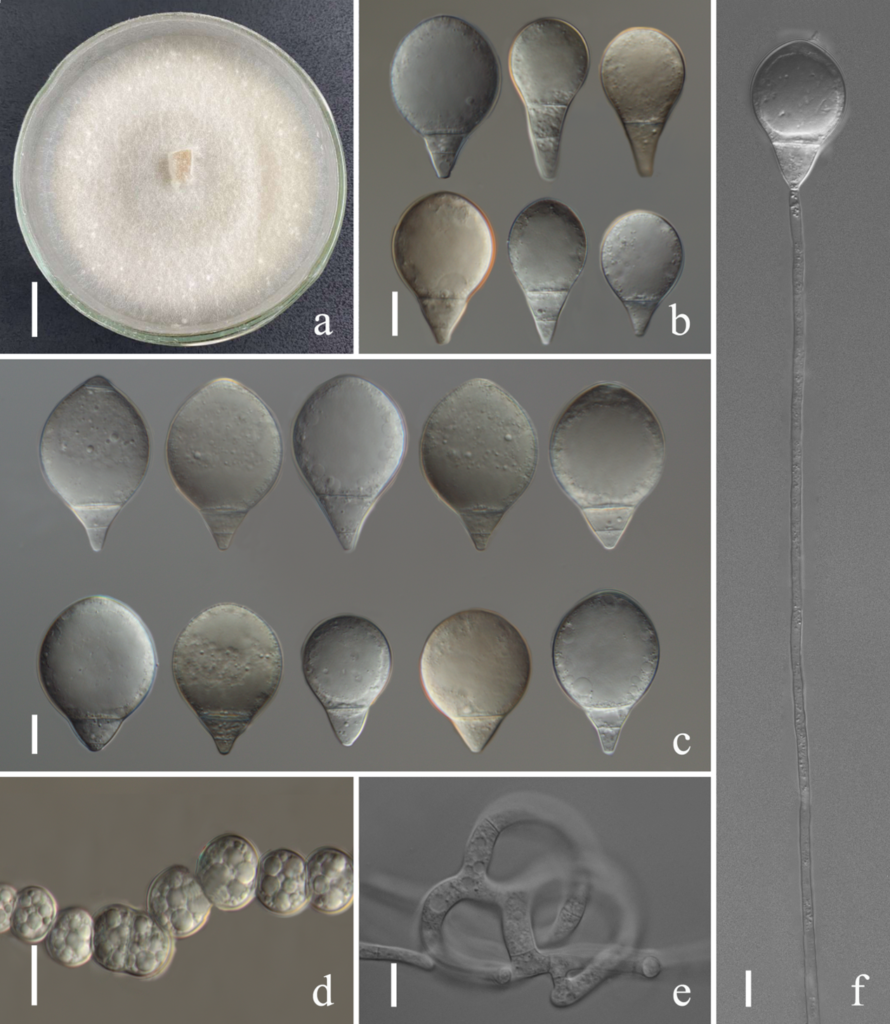Arthrobotrys luquanensis F. Zhang, X.Y. Yang & K. D. Hyde, sp. nov. FIGURE 4.
MycoBank number: MB; Index Fungorum number: IF; Facesoffungi number: FoF 10763;
Etymology: The species name “luquanensis” refers to the name of sample collection site: Luquan county, Kunming City, Yunnan Province, China. FoF 10763
Description: Colonies on PDA white, cottony, growing rapidly, reaching a diameter of 55 mm after 10 days incubation at 27°C. Mycelium colourless, composed of septate, branched, smooth hyphae. Conidiophores hyaline, erect, septate, unbranched, bearing a single holoblastic conidium at apex, 216–522 µm (x̅ = 346.5 µm, n = 50) long, 2.5–6.5 µm (x̅ = 4.3 µm, n = 150) wide at the base, gradually tapering upwards to 1.5–3.5 (2.3) µm (x̅ = 2.3 µm, n = 50) wide at the apex. Conidia hyaline, smooth, subfusiform or obovate, with largest cell located at the centre or apex of conidium, 1–4-septate, mostly 2 (located at the base) or 3-septate (with 2 septa located at basal part and one at apex), broadly rounded at apex, truncate at base, 28–53.5 × 17–2.5 µm (x̅ = 40.9 × 26.3 μm, n = 50). Chlamydospores hyaline, smooth, globose or ellipsoidal, in chains 6.5–17.5 × 6–14 µm (x̅ = 11.2 × 9.1 μm, n = 50). Capturing nematodes with adhesive network.
Material examined: CHINA, Yunnan Province, Kunming City, Luquan county, from terrestrial soil, 24 May 2017, F. Zhang. (DLUCC19, Holotype!).
Sequence data: ITS:OM855567

FIGURE 4. Arthrobotrys luquanensis (DLUCC19, holotype!). (a) Colony. (b, c) Conidia. (d) Chlamydospore. (e) Trapping-device: adhesive network. (f) Conidiophore. Scale bars: (a) = 1 cm, (b–f) = 10µm.
